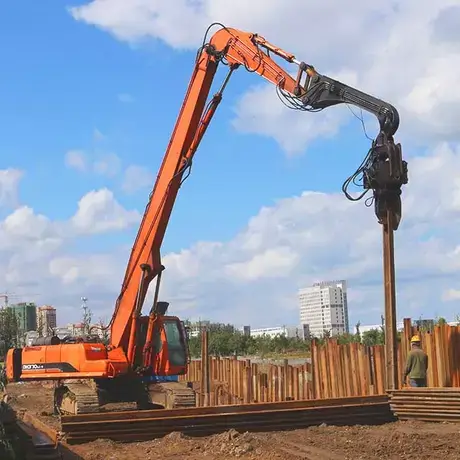When it comes to foundation and piling work, the vibratory hammer remains a cornerstone piece of equipment. From driving sheet piles to extracting casings, this tool is vital for projects in marine construction, bridge work, and deep foundation applications. If you’re currently in the market and searching for a vibratory hammer for sale, making the right choice requires a combination of technical understanding, site evaluation, and budget planning.
This guide offers expert insight into how to choose the right vibratory hammer for your project, helping you avoid costly missteps and ensure smooth operations on the job site.
1. Understand the Scope of Your Project
The first step in evaluating any vibratory hammer for sale is knowing exactly what you need it to do. Are you working on a land-based foundation or a marine application? Will you be driving steel sheet piles, H-beams, or tubular piles? Different pile types and soil conditions require specific hammer characteristics, including frequency, amplitude, and eccentric moment. Understanding these project variables helps narrow down your options to a model that can handle your specific workload.
2. Assess Soil and Ground Conditions
One of the most critical factors in vibratory hammer performance is how the soil behaves during pile driving. Loose sands, silts, and soft clays are generally more compatible with vibratory technology, while dense soils or rocky substrates may require alternative methods or more powerful equipment. When reviewing a vibratory hammer for sale, check if the model’s frequency and dynamic force match the soil profile of your job site. A mismatch can lead to inefficient driving, equipment wear, or project delays.
3. Determine Power Requirements and Carrier Compatibility
Vibratory hammers require hydraulic power to operate. Depending on the size and type of hammer, you may need a dedicated power pack or ensure compatibility with an existing crane or excavator. Always verify flow rate and pressure specifications. When browsing listings for a vibratory hammer for sale, look for complete technical details—including hydraulic requirements—to ensure a seamless fit with your existing equipment.
4. New vs. Used Equipment: What’s Best for You?
There are advantages to both new and used equipment. A new vibratory hammer for sale offers the latest in technology, higher efficiency, and minimal risk of wear or failure. On the other hand, a well-maintained used model can deliver excellent performance at a significantly lower cost. When considering used options, request maintenance records, inspect for visible wear, and verify that replacement parts are still available from the manufacturer or dealer.
5. Consider Brand Reputation and After-Sales Support
Choosing a reputable manufacturer or dealer is just as important as selecting the right model. Look for companies with proven performance in your sector, and don’t hesitate to ask about warranties, training, and service support. The availability of spare parts, technical guidance, and repair services can have a significant impact on long-term productivity. A trustworthy dealer offering a vibratory hammer for sale will be transparent, responsive, and knowledgeable.
6. Evaluate Transport, Storage, and Site Logistics
The size and weight of the hammer will influence transport costs and on-site maneuverability. Consider how the equipment will be delivered, how it will be stored, and whether your team has the capacity to handle it safely. For projects with space constraints or remote access, compact or modular vibratory hammer designs may be a better fit.
7. Check for Compliance and Safety Features
Modern construction sites must meet increasingly strict safety and environmental standards. Before committing to a vibratory hammer for sale, check that it complies with local noise, vibration, and emissions regulations. Also, ensure the equipment includes safety features such as remote operation, vibration dampening systems, and emergency shutoff controls.
Conclusion
Finding the right vibratory hammer for sale involves much more than comparing prices. It requires a deep understanding of your project needs, soil conditions, equipment compatibility, and long-term operating costs. By following this expert guide and working with a reliable supplier, you’ll be well-equipped to make a smart, informed investment that enhances your project’s efficiency and safety.
